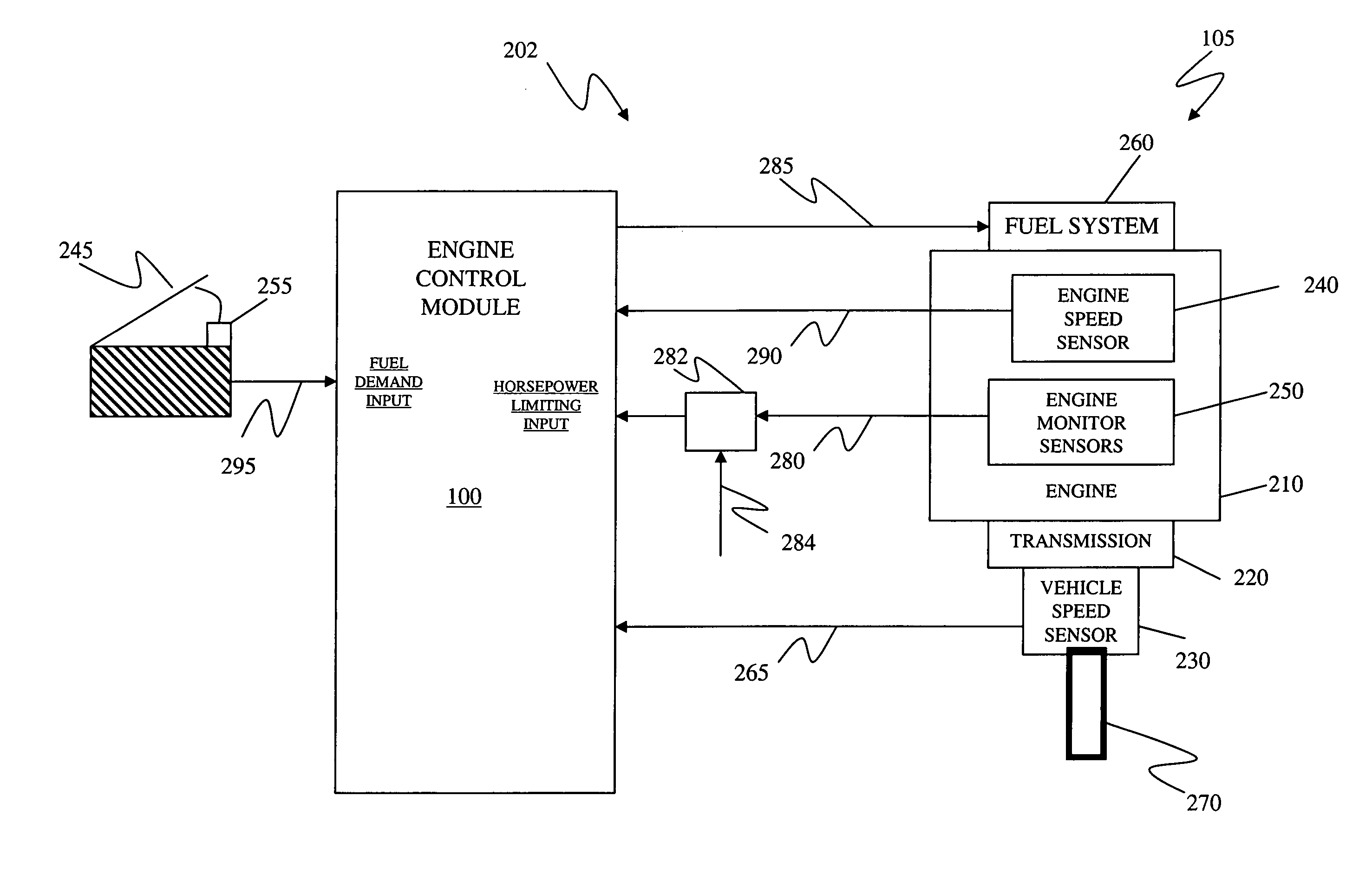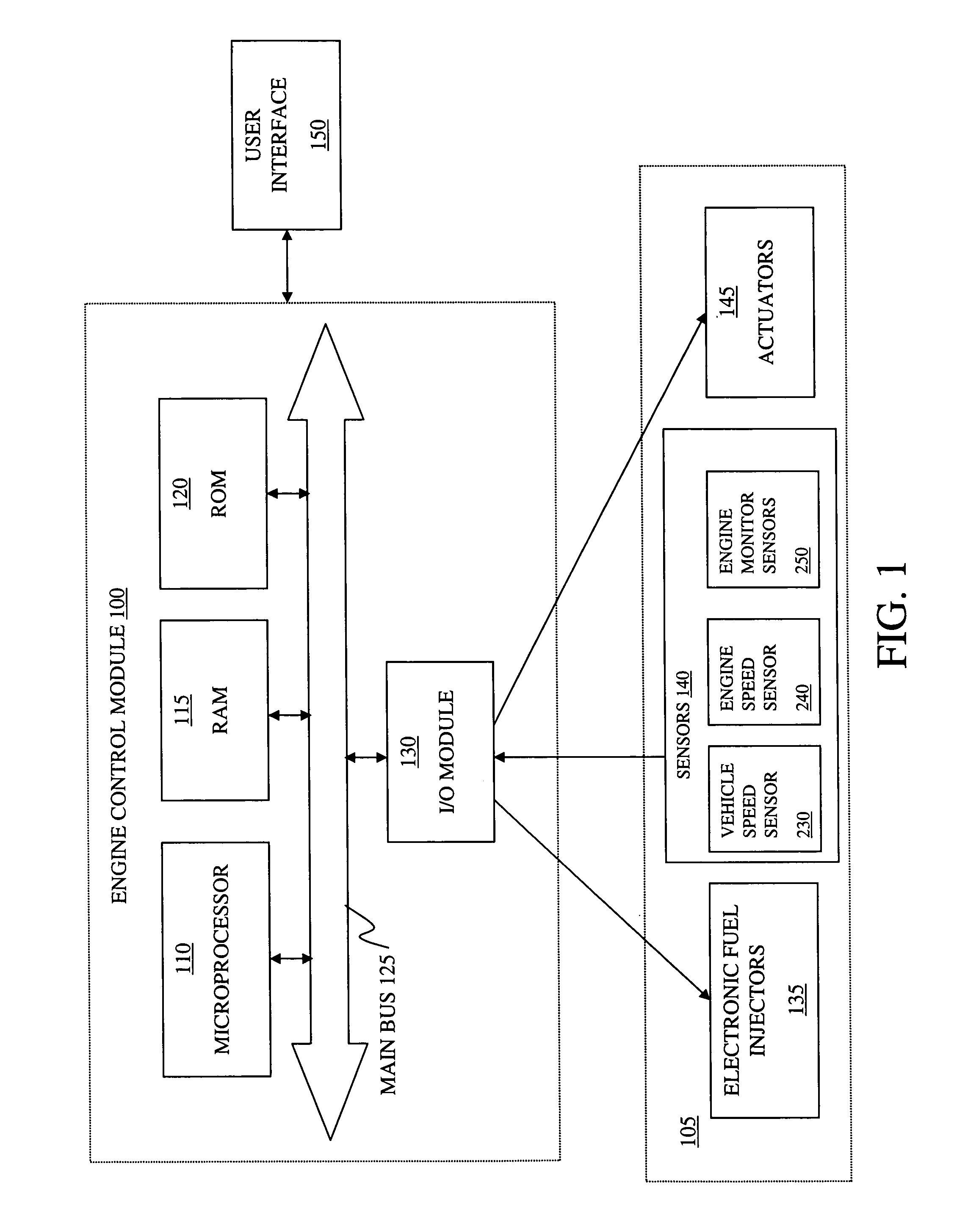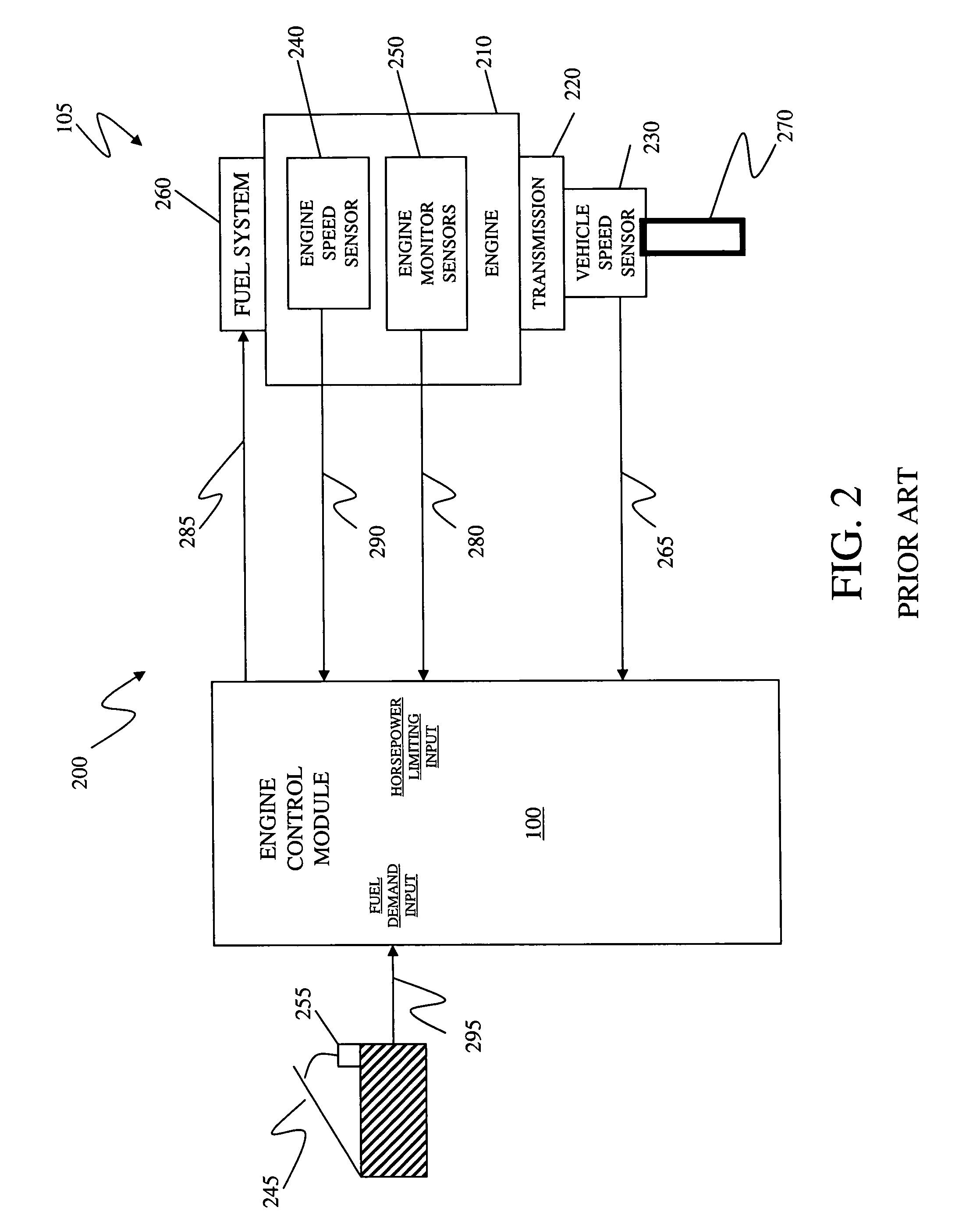Load-variable engine control system
a control system and variable engine technology, applied in the direction of electrical control, process and machine control, etc., can solve the problems that the driver's operation of a vehicle can also affect the fuel economy, outweigh the desire to maximize fuel economy, etc., to reduce engine horsepower, and reduce engine torque and/or horsepower.
- Summary
- Abstract
- Description
- Claims
- Application Information
AI Technical Summary
Benefits of technology
Problems solved by technology
Method used
Image
Examples
Embodiment Construction
[0014]In the control of combustion engines, the conventional practice utilizes an electronic engine control module (ECM) having volatile and nonvolatile memory, input and output driver circuitry, and a processor capable of executing a stored instruction set, to control the various functions of the engine and its associated systems. A particular electronic control unit communicates with numerous sensors, actuators, and other electronic control units necessary to control various functions, which may include various aspects of fuel delivery. Various embodiments of an engine control module (ECM) are known in the art. For example, U.S. Pat. Nos. 5,477,827, 5,937,826, and 6,135,918, incorporated herein by reference, each disclose an engine control module adaptable for use in the present invention.
[0015]Referring now to FIG. 1, there is shown an engine control module (ECM) 100 in communication with a typical assemblage of engine components, indicated generally by reference numeral 105, and...
PUM
 Login to View More
Login to View More Abstract
Description
Claims
Application Information
 Login to View More
Login to View More - R&D
- Intellectual Property
- Life Sciences
- Materials
- Tech Scout
- Unparalleled Data Quality
- Higher Quality Content
- 60% Fewer Hallucinations
Browse by: Latest US Patents, China's latest patents, Technical Efficacy Thesaurus, Application Domain, Technology Topic, Popular Technical Reports.
© 2025 PatSnap. All rights reserved.Legal|Privacy policy|Modern Slavery Act Transparency Statement|Sitemap|About US| Contact US: help@patsnap.com



